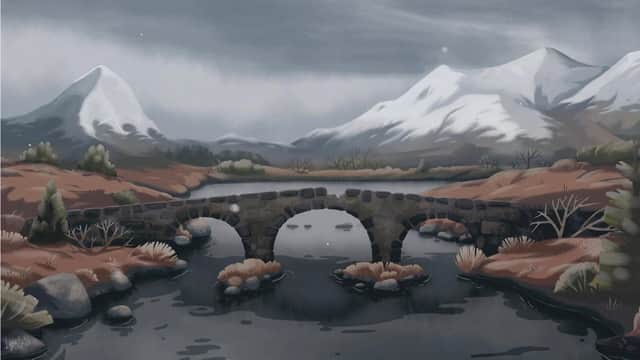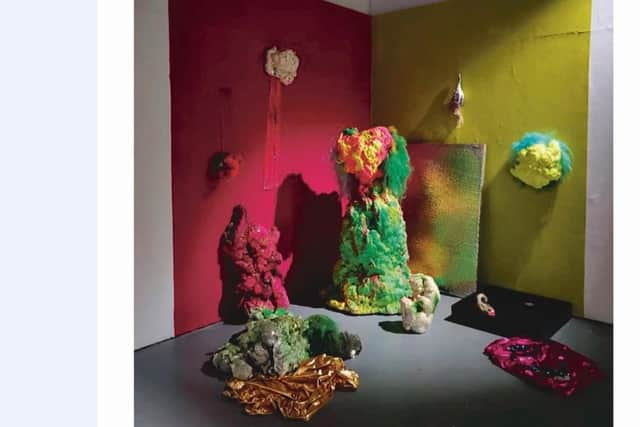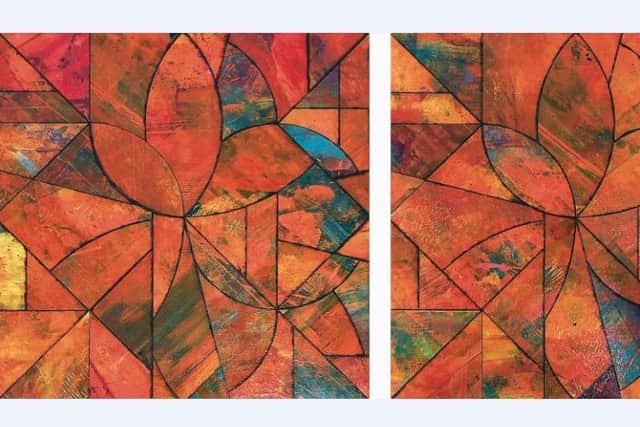Art review: Duncan of Jordanstone Graduate Showcase


As we learn, gradually, how to navigate this strange world in which the flesh-and-blood degree show has become the Online Graduate Showcase, we might observe that the characteristics of each art school come through online as much as they do “in real life.”
After the Glasgow School of Art show – heavy on conceptualism, multi-disciplinary artists and anger too, with some students refusing to show their work in protest against the decision to press ahead with an online show – Dundee is smaller, calmer, strong on skill, committed to exploring artistic processes.
Advertisement
Hide AdWith the disappearance of the “Time-Based Art” course in 2018, bringing all the Fine Art students together under the umbrella of “Contemporary Art Practice,” there is considerably less film in evidence. Less sculpture, too, though this might be no more than year-to-year variation. Painting is popular, as is print-making, and experimenting with analogue photography processes. Cyanotype appears to be new big thing.


Alexandra McConnell, who is inspired by the patterns found in microscopic examinations of parasites and diseases, and replicates them in colourful crocheted hats and scarves, has found her work suddenly to be at the top of the news agenda. In light of Covid-19, she has swiftly produced a range of crocheted masks.
Identity is a key issue, as young artists seek to make a place for themselves as practitioners and as people. Shawna Milligan makes paintings, sculpture and photographs which they describe as “rebelling against heteronormative cultures,” and which carry the rawness and energy of heartfelt experience. Morgan Black takes on Dundee’s (male-dominated) comic book history in a 25ft scroll of manga-style drawing, 2020: A Dundee Odyssey - A Tale of Comix, Coffee and Gender Non-conformity.
Catriona Fraser looks at the difficulties women face conforming to conventional ideals of beauty, creating a series of fine self portraits which are then damaged: submerged in wax, peppered with bullet holes, pierced with dying flowers. Reagan MacIntyre is interested in showing how the self is in a constant state of flux, painting figures against geometric backgrounds which grapple with this issue much as the modernist painters did.
Duncan of Jordanstone has a tradition of producing both figurative painters and medical illustrators. Anna Blair is a fine figurative painter who has chosen a career in medical illustration, and Jeannie Johnston is working in that territory too, with her intricate pencil drawings of the human heart, inspired by her mother’s open heart surgery.


A number of students are interested in exploring what is being lost in an increasingly digitised world. William Cunningham has taken the instagram hashtag #feltcutemightdeletelater and reproduced these half-committed selfies in satin impasto. Arguing that, thanks to social media, we are no longer separated from our fellow humans by six degrees of separation, but four, Danielle Stewart has made a strong series of portraits in which each subject provides the link to the next.
Advertisement
Hide AdIn general, the prevailing trend here is a rejection of the digital in favour of traditional media and hand-made processes. Lewis Deeney describes his paintings in these terms, experimenting with abstraction in texture and colour, while using pattern to give a sense of underlying harmony. Eve McGlynn abstracts elements of Giotto’s Life of the Virgin to create her own impressive abstract paintings. Sophie Percival experiments in colours and texture in both print-making and ceramics, allowing each process to feed into the other.
Photographers are tending to work with analogue processes: Annelisa Davis has created an evocative body of work about her home town, a mining community in Teesdale, using cyanotype and photogravure. Kirsty Robertson has made atmospheric pictures of an abandoned house using double- and long-exposure. William Bell creates abstract images using dye and cyanotype, balancing the control exerted by the artist against the free-flowing improvisations offered by the process.
Advertisement
Hide AdExploring one’s own memories and community is another prevalent theme. Libby Thomson reflects on her memories of working-class Dundee in photographs and strong, lively paintings of the city’s streets and towerblocks. Kaya Fraser takes on the task of being an “everyday archivist” for her extended family, while Heather Taylor is creating an archive, too, but one in which monochrome panels stand in for missing information and provide spaces in which to reflect.
Tomas Burke takes an imaginative approach to environmental issues, making himself and his dog into a kind of private detective agency investigating pieces of litter as if they were crimes. Graham Wallace is concerned with discarded plastics, creating a body of work which includes paintings, photographs and plastic “exhibits” replicating the shapes and colours of critically endangered marine species.
It’s a strong, interesting show with plenty to like, but none of this should be allowed to suggest that graduating as an artist during a pandemic is easy. Seeing the work online, we miss the impact of YiXuan R’s floor-to-ceiling paintings which aim to convey the immersive experience of sky-diving; Lisa Reynold’s “museum” dedicated to Dundee’s own cryptozoological mystery, the “mothbam” – a tracksuit-wearing mothman who prowls the streets after dark; and Tomas Burke’s walking tour of his “scenes of crime.”
Then there are the works unfinished because of Covid-19, such as Stella Rooney’s film about Dundee’s former Timex factory and the fight to keep it open. Her study of time as relating to waged labour, from the early battles for the regulation of the working day through to today’s zero-hours contracts, remains one of the most timely (no pun intended) explorations of the show.
However, within the limits of the small screen, let us continue to celebrate another cohort of graduates and their passions – from body-building to sky-diving to burlesque dancing – still managing, in this toughest of years, to carve out space for themselves in the world.
To view the exhibition online, visit www.dundee.ac.uk/graduateshowcase
A message from the Editor:
Advertisement
Hide AdThank you for reading this story on our website. While I have your attention, I also have an important request to make of you.
With the coronavirus lockdown having a major impact on many of our advertisers - and consequently the revenue we receive - we are more reliant than ever on you taking out a digital subscription.
Advertisement
Hide AdSubscribe to scotsman.com and enjoy unlimited access to Scottish news and information online and on our app. With a digital subscription, you can read more than 5 articles, see fewer ads, enjoy faster load times, and get access to exclusive newsletters and content. Visit https://www.scotsman.com/subscriptions now to sign up.
Joy Yates, Editorial Director